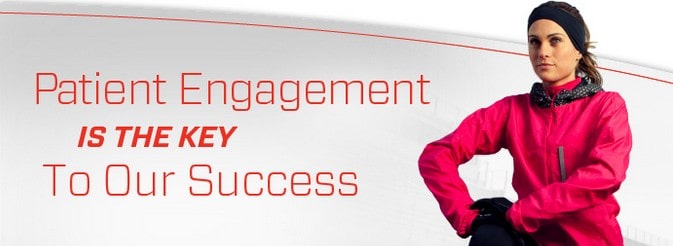
Easy to claim, but is it true? Only time will tell which organizations are getting it right, and which are little more than hype.
“Patient Engagement” has built up increasing buzz over the last few years through dedicated lip service from government, corporations, public leaders, entrepreneurs, and patient advocates. As John alluded to last week, however, patient engagement may be entering a Catch-22: Most everyone agrees it plays a vital role in the modern health care system we purport progress towards – yet the immense hype it’s developed has already begun prompting eye-rolling among health care executives who are skeptical of all the talk.
HIMSS provided a perfect backdrop to explore both the ballooning expectations in this area as well as showcase some of the budding signs of progress. While I agree with John’s central thesis (to date, mostly a heavy marketing push geared towards loyalty rather than engagement), there are some early signs of progress that indicate we are in the early stages of a shift from the ‘talking’ phase to the ‘showing’ phase.
At a presentation by University of Miami Children’s Hospital, we got a peek at what this could look like when done well (PDF). They have designed a complete view of the hospital’s workflow as it involves any ‘patient touches.’ First they break down the various stages of a patient’s interaction with the health care system into five major buckets:
- Pre-Arrival
- Pre-Treatment
- Point of Care
- Discharge
- Follow-up
Inside each of these intervals of the patient journey through UMiami’s system, there are corresponding “engagement” protocols, tools, and processes deployed. For example, while a patient is in the waiting room, there is a digital check-in system that also addresses medication adherence inquiries, assesses gaps in care, and occupies patients (in this case, children and parents) with interactive waiting room programs. A mirroring process is in place at check-out to follow up on reported gaps or issues, administer a quick experience survey, and recruit for enrollment into any relevant support programs or follow-on visits.
The thesis claims that building this baseline connection to the patient using a set of tools pulls them into a workflow that is subsequently easier to maintain through a continuum of online messaging, reminder systems, and follow-up care. A central tenet of this approach is consistency: use the same format and the same branding in these efforts to ensure patients feel they are a part of something, rather than a widget.
If a personal episode of care I endured last fall in Austin is a barometer of progress, we are very far from the ideal: Typically, patients are directed to some half-baked portal to pick a doctor, usually through their insurer, which has no effect on the amount of paperwork that needs to be filled in at the doctor’s office or the subspecialty referral clinic. Once the care is delivered in the silo (team of one), the payment vultures descend, with the referring doctor’s office, the specialists’ billing department, and insurance companies snail-mailing multiple paper documents in the following weeks and months. To wit, none of that pile of papers inquires about the patient’s current health status – it just scares them away from making an appointment the next time if it’s at all avoidable.
So in our eyes, patient engagement is about more than a turnkey solution, or a whiz-bang app. It is an approach. In our fragmented payment and delivery system, seamless experiences are the exception, not the norm. It follows then that meaningful, comprehensive engagement platforms won’t emerge until HCOs change the way they operate.
We are realists here at Chilmark Research, so while we won’t offer a take on how much water has been poured into the glass, we are working on a more detailed analysis for this month’s CAS subscribers about the drivers and trends that might produce a more comprehensive approach to patient engagement by next year’s HIMSS conference.




Great post! A post I did this week speaks to same issue. The title says it all.
HIT-Driven Patient Engagement Is A Bust – Effective Patient Engagement Begins With The Doctor-Patient Relationship
Like your U of Miami story, I share how Mayo Clinic, with 240,000 registered users on it patient portal, can’t get 5% of them to go on and actually use it to access their health information as mandated bu Meaningful Use Stage 2 requirements. Even scarier is how Mayo is redirecting new sign ups to the patient portal to first look at their Doctor’s Note before being able to go where they want – like schedule an online appt. That way they can say people viewed their health data and meet MU requirements. The only problem…its not patient-centered. That’s the epitome of provider-directed.
Steve Wilkins, MPH
http://www.healthecommunications.wordpress.com